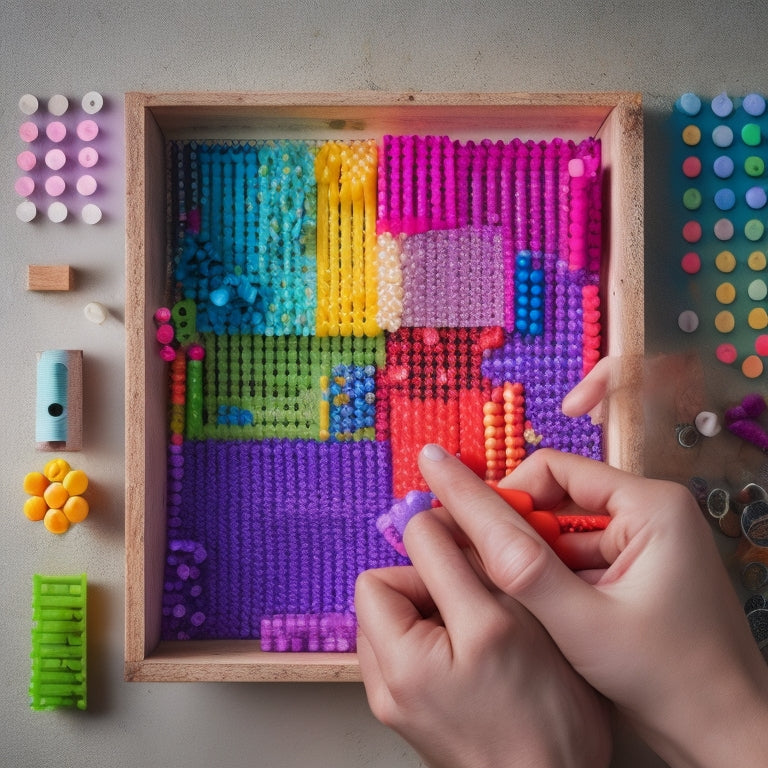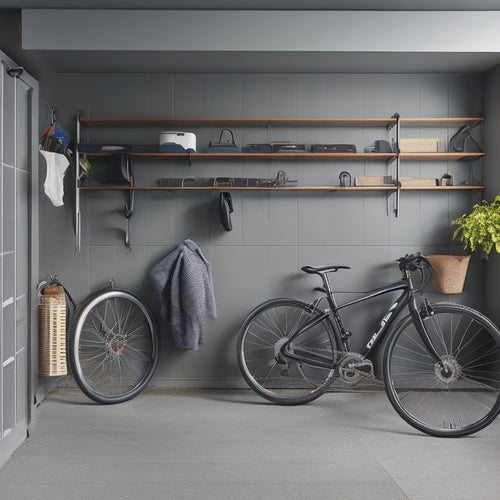
Enhance Coordination With Grooved Pegboard Challenge
Share
The Grooved Pegboard Challenge is a scientifically validated tool for enhancing visual-motor coordination, fine motor skills, and cognitive function. By using this manipulative dexterity test, individuals can improve their hand-eye coordination, precision, and accuracy in tasks. The challenge requires precise rotation and insertion of pegs, evaluating cognitive benefits like problem-solving. Improved coordination can lead to enhanced motor skills, cognitive function, and increased confidence. Standardized protocols for administration and guaranteeing testing conditions for diverse populations guarantee accurate assessment of visual-motor coordination and fine motor skills. Explore the nuances of the Grooved Pegboard Challenge to realize its full potential.
Key Takeaways
• Mastering the Grooved Pegboard Challenge improves visual-motor coordination, fine motor skills, and hand-eye coordination for enhanced task performance.
• Effective training techniques involve developing hand-eye coordination and fine motor skills to achieve precise peg rotation and insertion.
• Improved coordination boosts confidence and a sense of accomplishment, extending to various aspects of life, including cognitive function and problem-solving.
• The challenge provides a reliable and valid evaluation of visual-motor coordination, fine motor skills, and hand-eye coordination, making it useful for diverse applications.
• Standardized protocols and adapted testing conditions ensure accurate assessments, accommodating individual differences in skill development and cognitive function.
Understanding the Grooved Pegboard
The Grooved Pegboard is a widely used manipulative dexterity test that assesses an individual's visual-motor coordination by requiring the precise rotation and insertion of pegs into 25 holes with randomly positioned slots.
Understanding the pegboard mechanics is vital for effective training techniques, which involve developing hand-eye coordination and fine motor skills.
The test's design enables the evaluation of cognitive benefits, such as problem-solving and spatial awareness, in addition to motor skills.
By mastering the Grooved Pegboard, individuals can improve their overall dexterity, enhancing their ability to perform complex tasks that require precision and coordination.
With its versatility and convenience, the Grooved Pegboard is an ideal tool for various applications, including student labs, industry screening, and brain damage evaluation.
Benefits of Improved Coordination
By mastering the Grooved Pegboard, individuals can experience significant benefits in their daily lives and professional performances, as improved coordination enhances their ability to execute complex tasks with precision and accuracy. This is because the Grooved Pegboard challenge targets the development of fine motor skills, hand-eye coordination, and cognitive function.
As a result, individuals can expect to see improvements in:
-
Improved motor skills: Enhanced dexterity and coordination enable individuals to perform tasks with greater precision and speed.
-
Cognitive function: The Grooved Pegboard challenge stimulates cognitive development, leading to improved problem-solving abilities and enhanced mental processing.
-
Enhanced hand-eye coordination: The pegboard exercise promotes synchronization between visual and motor skills, resulting in more accurate and efficient task execution.
- Increased confidence: As individuals master the Grooved Pegboard, they develop a sense of accomplishment and confidence in their abilities, translating to improved performance in various aspects of life.
Effective Testing and Evaluation
Evaluators can effectively administer the Grooved Pegboard challenge by following standardized protocols and additionally adapting testing conditions to accommodate diverse populations. This guarantees that the evaluation techniques and testing methods used are reliable and valid.
To guarantee accurate cognitive assessment, evaluators should consider individual differences in skill development and adjust the test accordingly. By doing so, the Grooved Pegboard challenge can effectively assess visual-motor coordination, fine motor skills, and hand-eye coordination. Additionally, it can identify lateralized brain damage and provide valuable insights into cognitive function.
Frequently Asked Questions
Can the Grooved Pegboard Be Used for Children With Developmental Delays?
'Carefully crafted for childhood development, the Grooved Pegboard offers engaging cognitive challenges, seamlessly integrating into therapy sessions to foster fine motor skills and visual-motor coordination, making it an ideal tool for children with developmental delays.'
Are the Pegs and Board Durable Enough for Repeated Use?
The pegs and board are constructed with high-quality, wear-resistant materials to guarantee durability and longevity, withstanding repeated use in various testing environments, including student labs, industry screening, and brain damage evaluation.
How Do I Score and Interpret the Test Results Accurately?
"Common concerns about scoring accuracy can be alleviated by following standardized test administration protocols and conducting thorough data analysis, ensuring reliable and valid results that accurately reflect an individual's visual-motor coordination abilities."
Is the Grooved Pegboard Suitable for Testing Individuals With Disabilities?
The Grooved Pegboard Test is suitable for individuals with disabilities, addressing accessibility concerns through inclusive design, allowing adaptability for diverse needs, and ensuring equal opportunities for accurate assessment of visual-motor coordination.
Can the Test Be Adapted for Use With the Non-Dominant Hand?
"Practice makes perfect" is especially true when adapting the Grooved Pegboard Test for non-dominant hand use. By implementing hand preference awareness and adaptation strategies, individuals can develop proficiency, enhancing hand-eye coordination and fine motor skills in their non-dominant hand.
Related Posts
-

Large Wall Hooks to Maximize Garage Space
You can effectively double your garage's storage capacity by installing large wall hooks that keep items off the floo...
-

Small Storage Bins to Maximize Shelf Space
When maximizing shelf space, you want to make the most of every inch. Small storage bins are the answer, but choosing...
-

Building Garage Shelves in 7 Easy Steps
You're about to convert your garage into a highly functional storage space by building custom shelves in just 7 easy ...


